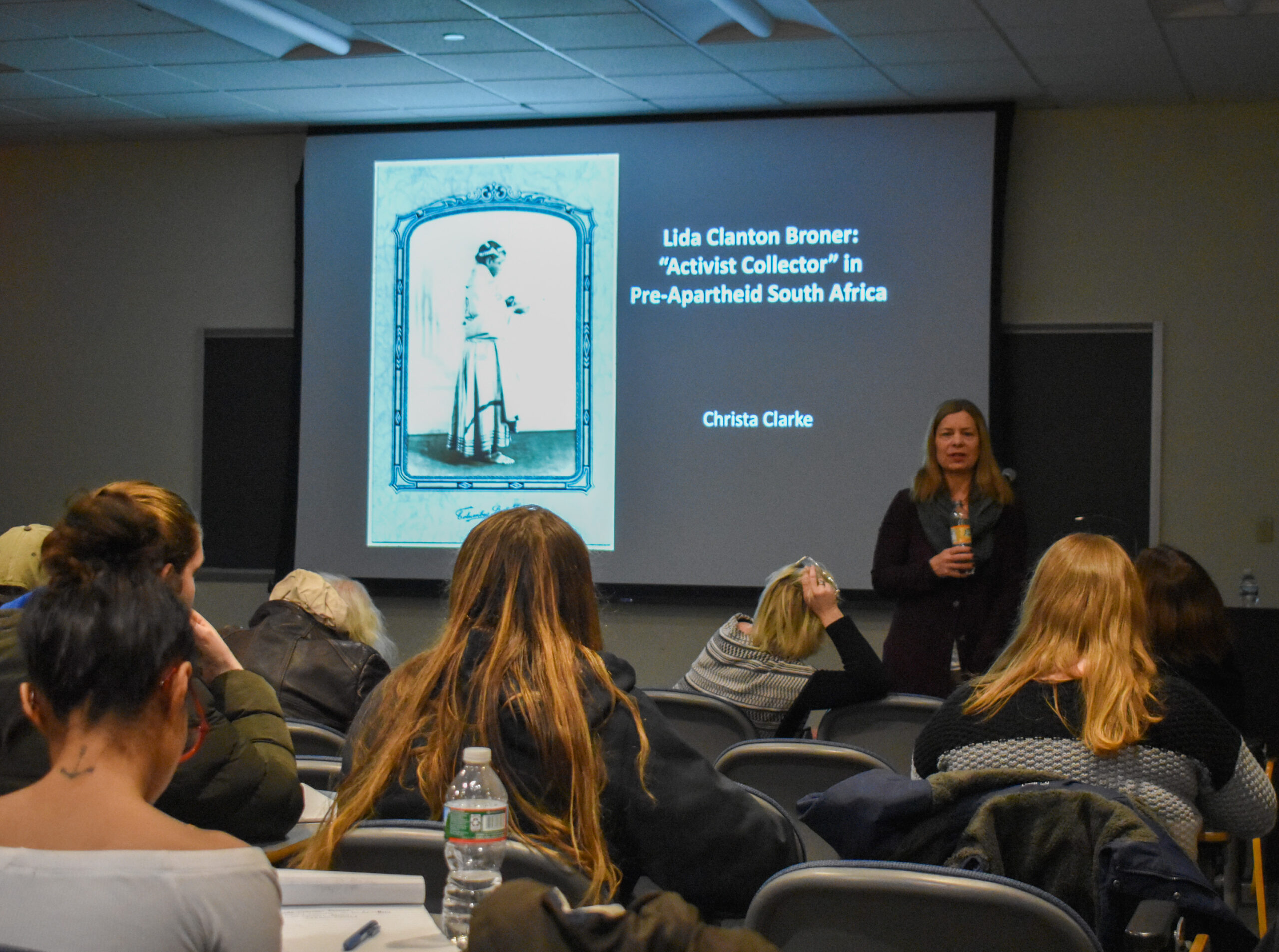On Feb. 21 in the Ellison Lecture Hall, the 11th annual Mary L. Heuser lecture in art history took place. The talk featured Christa Clarke, Ph.D., the Board President of the Association of Art Museum Curators (AAMC) and the AAMC foundation. Clarke is an associate with Harvard’s Hutchins Center for African & African American Research and will be a curatorial fellow at the Clark Art Institution in the fall of 2019.

The lecture commenced with an introduction by Kim Miller, associate professor of women’s & gender studies and art history. Miller spoke about how the annual Heuser lecture “provides the art history department with the opportunity to bring a distinguished art historian to campus for an evening to share [their] research with us. The Heuser lecture is generously funded by the Friends of Art, and we are very grateful of their support of our department and of the arts, and we are grateful that they recognize the value of bringing visiting scholars here to campus to share their work with us.” Miller credited Professor Ellen McBreen of the art history department for organizing the event and bringing Clarke for the lecture.
Miller described Clarke’s accomplishments, stating that Clarke’s “scholarship has been recognized through grants and fellowships at some of the most prestigious institutions in the field of art history and in the humanities. For example, she has held fellowships at the Smithsonian’s National Museum of African Art, at the Metropolitan Museum of Art, and twice at the Clark Institute.” After receiving much more praise from Miller, Clarke started her lecture.
Clarke began by thanking the family of Lida Clanton Broner, whom her lecture was about, for giving her the privilege of telling Broner’s story. Clarke described how in 1938, Broner had left her home in New Jersey to visit South Africa, where “she hoped to not only find her ancestors but to gain first-hand knowledge about the challenges faced by blacks under the segregationist policies of the time.” Broner began a journal on the night of her departure that documented her trip.
Clarke explained that Broner saved money by working as a domestic servant and a hairstylist so that she could travel to Africa in 1938. “By that time, Broner had also become interested in connecting the political and social concerns of African Americans with those of black South Africans,” said Clarke. “Her grassroots activism had emerged through her involvement in African American churches and women’s clubs, her work in the black beauty industry and especially through her association with the Council on African Affairs.”
During Broner’s journey, “she took snapshots of friends and people she met, was given a Zulu name, and even has a Xhosa dress made for herself,” said Clarke. The Xhosa dress is part of a larger collection that Broner assembled during her time in Africa, amounting to “about 150 works in all, including beadwork, pottery, fiber mats, and needlework. Many were gifts from black South Africans whose names Broner carefully recorded on handwritten tags along with dates and places. Back in the U.S., Broner presented her collection in public displays about life in South Africa.”
In 1943, continued Clarke, Broner’s collection was exhibited in the Newark Museum, and Broner later donated approximately 60 pieces of art to the museum. Since then, the works of art have mainly been sitting in storage. Clarke joined the Newark Museum as curator in 2002 and, while familiarizing herself with its African American art, came across the Broner collection. Clarke described how “a window was opened on to this story in March of 2014 when one of Broner’s grandsons, Tom Clanton, contacted me out of the blue wondering if the museum still had his grandmother’s collection.” Clarke invited Tom and his brother to look at the works, and they showed up with the entire archive of Broner’s journey. It included an additional 90 objects, her journal from the trip, her photographs, two scrapbooks and other mementos. “This extraordinary collection of objects, photographs and texts is the subject of my forthcoming book,” said Clarke. “Drawing upon this deep visual and documentary record, I tell not only the story of Broner’s remarkable journey, but also consider what the collection says about her experiences there and how it was used in the context of her social activism on her return home.” “Lida Clanton Broner’s story has certainly encouraged me to explore its potential to enrich and complicate familiar narratives of African art and collecting,” concluded Clarke. “While a small recent exhibition offered a glimpse of this story, a future project is to reassemble and display the entire collection, along with supporting documentary material, animating the lost history behind these objects and moving beyond formal appreciation into much more rewarding historical cultural territory. Such an exhibition would have the added virtue of connecting the museum to the community of Newark, honoring the museum’s tradition and the memory of a remarkable and intrepid woman.”